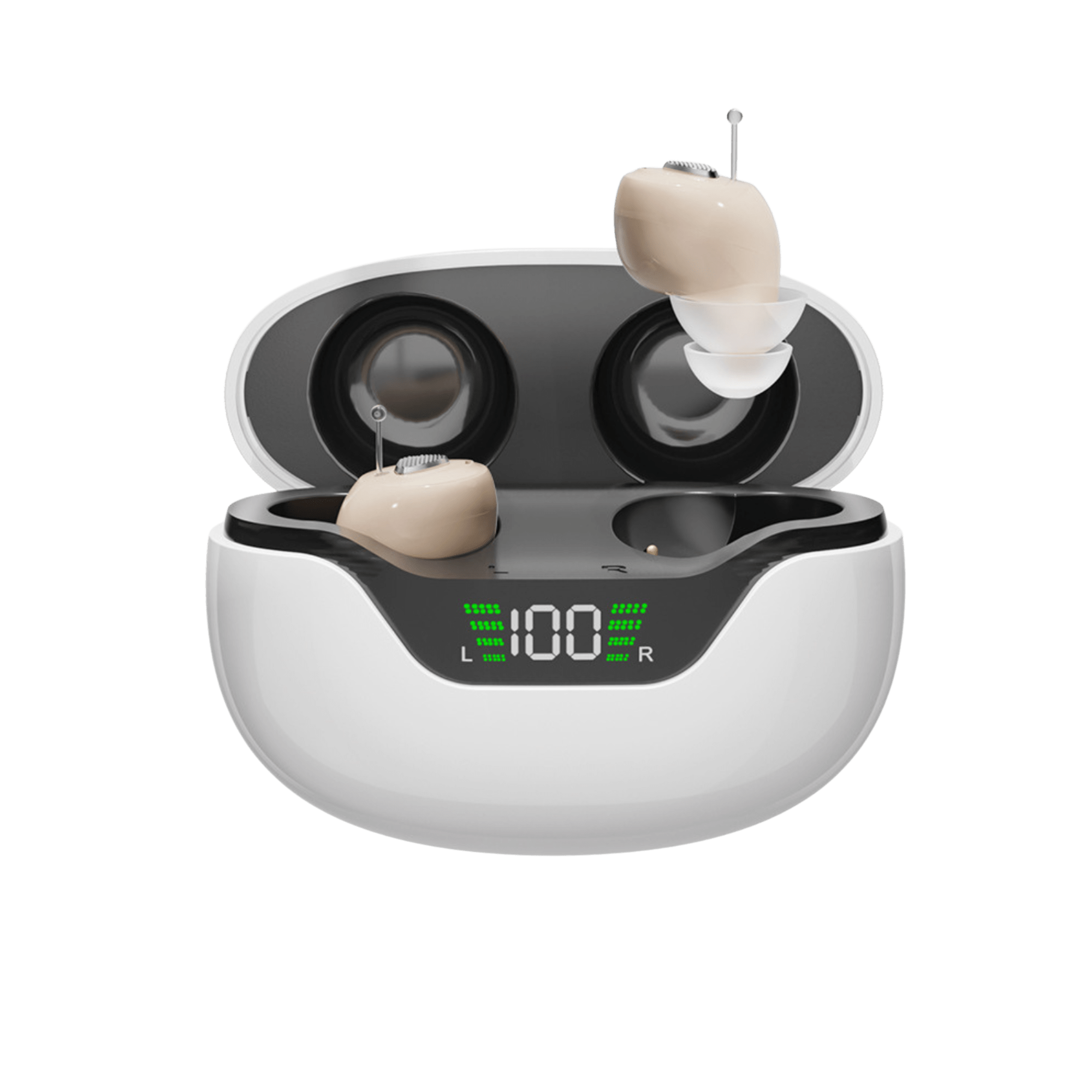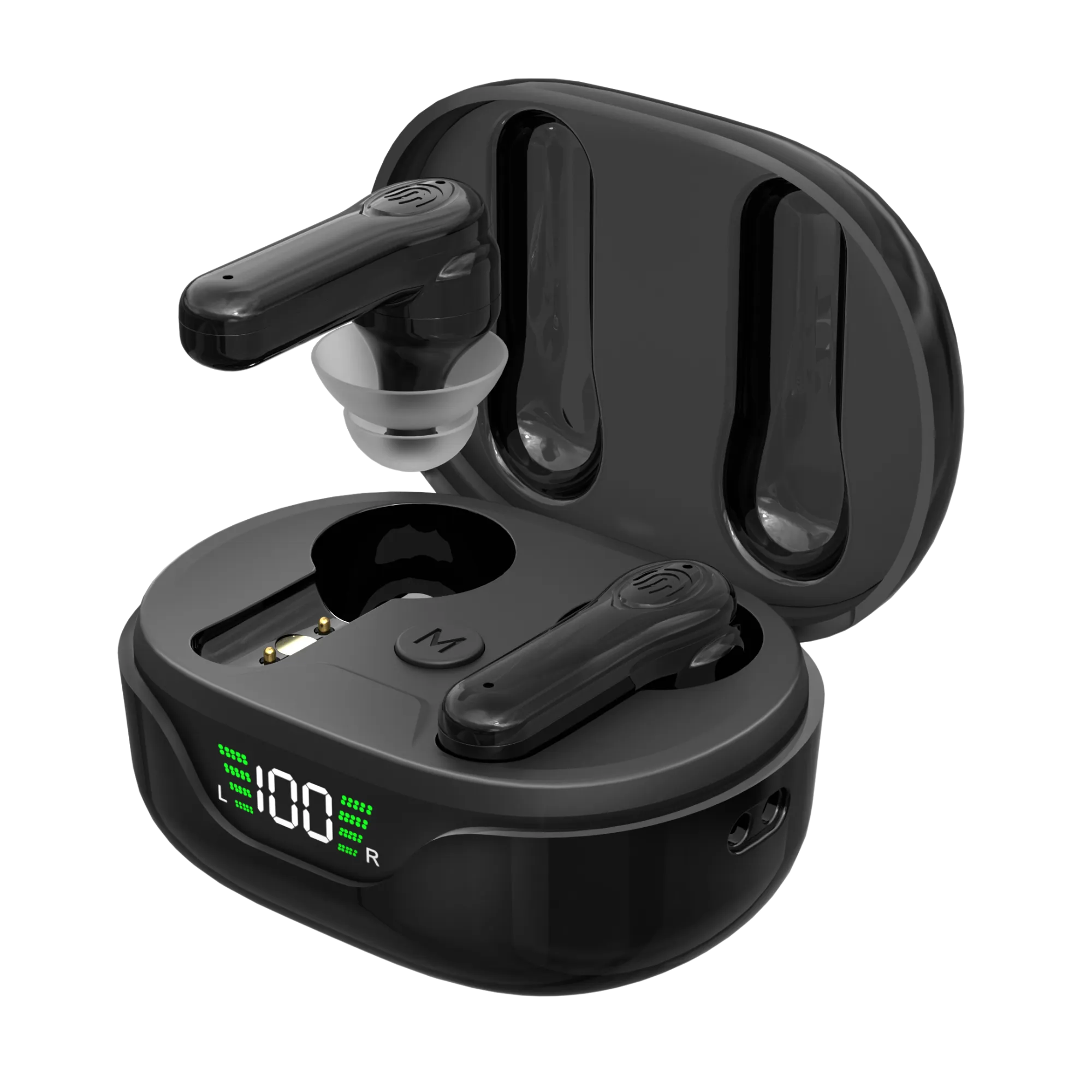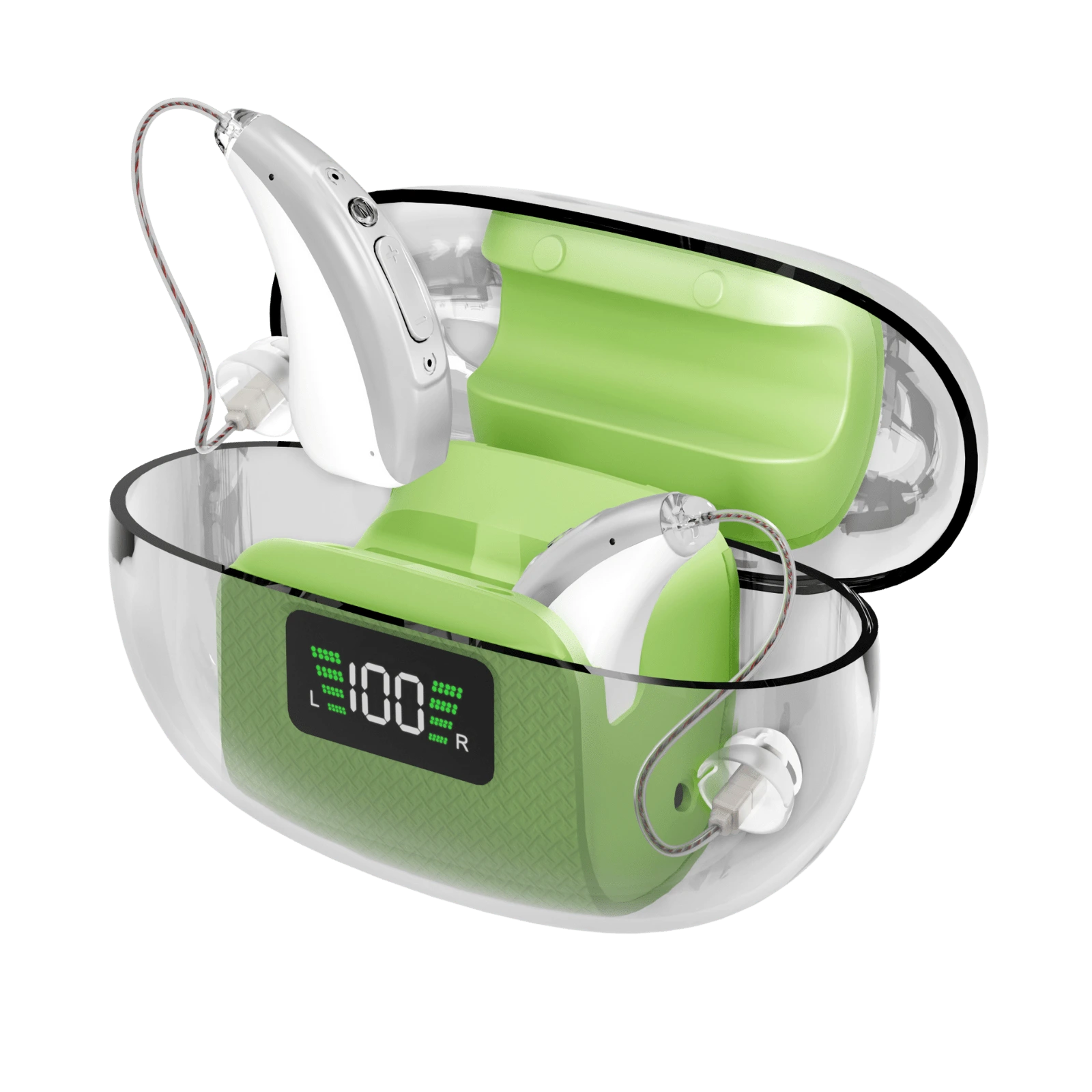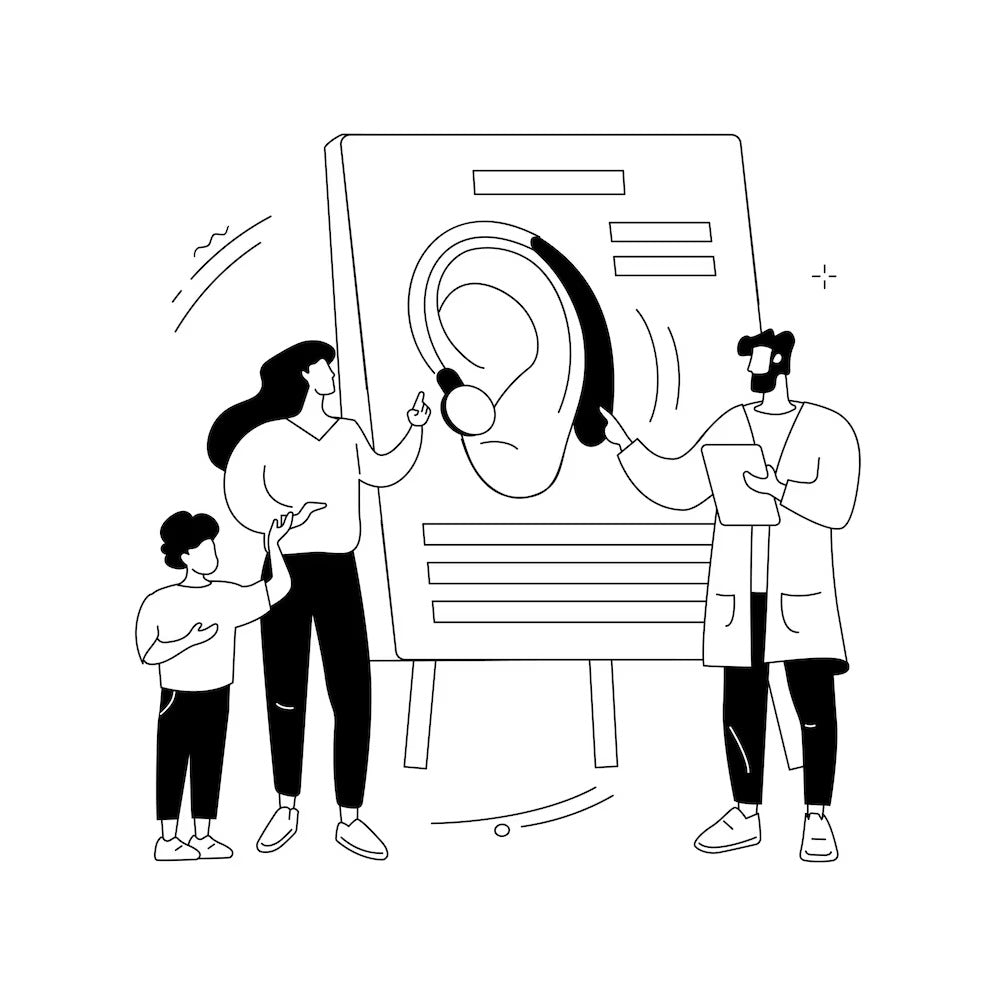Unlocking the Full Potential of Hearing Aids
Hearing loss is one of the most common chronic conditions in later life. The World Health Organization estimates that by 2050 nearly 2.5 billion people—almost one‑quarter of the global population—will have some degree of hearing loss, and at least 700 million will require rehabilitation[1]. Yet hearing‑aid adoption remains low: among U.S. adults aged 70 years and older who could benefit from hearing aids, fewer than one‑third (30%) have ever used them and among adults aged 20–69 only about 16% have tried hearing aids[2]. Untreated hearing loss can lead to social isolation, higher health‑care costs and cognitive decline[3]. Thankfully, modern hearing aids offer advanced features at lower costs than ever before and, when paired with professional guidance, can dramatically improve quality of life[4].
Why Address Hearing Loss Early?
Health and Quality‑of‑Life Benefits
Numerous studies show that treating hearing loss can protect health and well‑being:
-
Cognitive health: The ACHIEVE clinical trial—one of the largest randomized trials of hearing‑aid use—found that in older adults at risk for cognitive decline, using hearing aids for three years slowed cognitive decline by 48% compared with education alone[5]. Researchers noted that the intervention improved communication, social functioning and loneliness[6].
-
Mental health and fall risk: A Michigan Medicine study reported that hearing‑aid users (66+ years) had an 18% lower risk of dementia, 11% lower risk of depression or anxiety and a 13% lower risk of injurious falls compared with non‑users[4]. Hearing loss triples the risk of falls in adults aged 40–69[7]; some modern hearing aids now incorporate motion sensors and fall‑detection alerts[8].
-
Social engagement: Large surveys show that 96% of hearing‑aid users report improved quality of life and social participation[9], and 77% say their social life improves after fitting[9]. Hearing‑aid users also report less stress and fatigue, greater confidence and better work performance[10].
-
Economic impact: Untreated hearing loss is associated with 46% higher total health‑care costs over a 10‑year period[11]. Better Hearing Institute data suggest that untreated hearing loss can reduce annual income by up to $30 000, while hearing‑aid use reduces this risk by over 90%[12].
These findings underline the importance of addressing hearing loss early, both for individual well‑being and long‑term financial health.
Rediscovering Music: Tips for a Richer Listening Experience
For many people, music becomes less enjoyable as hearing diminishes. Modern hearing aids, however, have been designed with music in mind:
-
Adaptive sound processing and AI modes: Some hearing aids automatically switch to a music program that amplifies a wide frequency range while reducing background noise. Consulting with a hearing care professional (virtually or in person) allows further fine‑tuning to your musical preferences.
-
Bluetooth LE Audio streaming: Bluetooth Low Energy (LE) Audio, officially launched in 2023, offers low‑power audio streaming, improved sound quality with lower data rates and multi‑stream audio (audio sent separately to each ear)[13]. LE Audio enables hands‑free calling and broadcast sound from compatible venues[13]. Look for devices that support LE Audio for seamless connection to smartphones, tablets and TVs without draining the battery.
-
Practise with variety: Gradually expose yourself to different musical genres at moderate volumes. Brain plasticity helps you adapt to new sound patterns, and many users report that bass vibrations and instrument separation become more apparent over time.
-
Use dedicated accessories: If your current hearing aids are not LE Audio compatible, add a small streaming accessory or clip‑on microphone to deliver music from your device to your aids. Ensure that batteries or rechargeable cells provide adequate run time for lengthy listening sessions.
Quick‑reference features (for music lovers)
|
Feature |
Why it matters |
Example |
|
LE Audio compatibility |
Low‑power streaming, better audio quality and multi‑stream support[13] |
Many 2024–2025 premium devices; ask your provider |
|
Custom music program |
Amplifies wide frequency range and reduces background noise |
Adjusted by audiologist or app |
|
Rechargeable battery ≥24 h |
Prevents interruptions during all‑day listening |
Most modern rechargeable models |
|
Remote app control |
Lets you switch programs or adjust equalisation on the fly |
Experience Effortless Setup with Panda Hearing Aids
Not all hearing aids require lengthy clinic visits or complicated fittings. Our flagship Panda Quantum is one of the few devices on the market with a built-in self-hearing test, allowing you to personalize your sound profile right from home—no audiologist appointment needed. Customers often tell us this feature gives them the freedom to start hearing better on day one, without the hassle or cost of scheduling a professional fitting.
For those who prefer simplicity, every other Panda Hearing model is designed for true out-of-the-box use. Just unbox, charge, and wear—setup takes minutes, not hours. This makes Panda Hearing especially appealing for seniors, busy professionals, or anyone who wants reliable, high-quality hearing support without extra steps.
By combining advanced features like AI sound optimization with user-friendly design, Panda Hearing delivers not only premium performance but also unmatched convenience. Whether you’re adjusting Quantum with its self-test or slipping on one of our ready-to-go models, you’ll find that better hearing has never been this easy.
Swimming Safely: Understanding Water‑Resistance Ratings
No hearing aid is truly waterproof, but many are designed to withstand moisture. This is measured by the Ingress Protection (IP) rating, which uses two digits: the first describes resistance to dust and solids (0–6) and the second indicates water resistance (0–9). The American Ear guide explains that IPX4–IPX5 devices are splash‑proof, while IPX7 and above can handle temporary immersion[14]. An IP68 rating—common in high‑end models—is dust‑tight and can withstand continuous immersion up to 3 feet (≈1 m)[15].
Water‑safety tips
-
Choose the right rating: Select devices with at least IP67 or IP68 if you plan to exercise, shower or swim in shallow water. These models are designed to survive temporary immersion up to about 30 minutes[15].
-
Avoid deep or prolonged swimming: Even IP68 devices are not suited for diving or extended swimming. Remove hearing aids before submerging or wear waterproof covers designed for short swims.
-
Pre‑ and post‑swim care: Before swimming, store non‑water‑resistant aids in a dry case. After exposure to moisture, gently wipe aids dry and allow them to air‑dry; never use a hair dryer. Replace disposable batteries or recharge as needed.
-
Consider climate and lifestyle: If you live in a humid or rainy environment, or exercise regularly, waterproof or water‑resistant models offer extra peace of mind[16].
Navigating Online Purchases: What to Know About OTC and Prescription Aids
The 2022 FDA rule created a new category of over‑the‑counter (OTC) hearing aids. These devices can be purchased without seeing a hearing professional and are intended for adults with mild to moderate perceived hearing loss[17]. Self‑fit OTC products can be bought in stores or online and allow the user to adjust basic settings themselves[18].
OTC vs. prescription: key differences
|
Aspect |
OTC hearing aids[17] |
Prescription hearing aids |
Practical tips |
|
Who they’re for |
Adults ≥18 years with mild to moderate hearing loss[17] |
People of any age with mild to profound loss |
Seek a hearing test to confirm your loss severity |
|
Fitting & adjustments |
Self‑fitting; limited customisation[19] |
Professionally fitted and programmed[20] |
If you’re unsure, start with a professional evaluation |
|
Features |
Often fewer features but improving; check for rechargeable batteries, Bluetooth streaming, feedback control and telecoil[21] |
Wide range of features, including AI‑powered sound processing and remote adjustments |
List your must‑have features before shopping |
|
Cost & trial period |
Generally lower cost; check return policies; FDA rules require clear labelling[22] |
Higher cost due to professional services; may include longer trial |
Compare the cost per day over the device’s life (≈5 years)[23] |
Safe‑shopping guidelines
-
Start with a hearing assessment: Even if you opt for OTC devices, a baseline hearing test or reputable online hearing‑screening tool helps you select the right gain and features.
-
Buy from reputable sources: Choose sellers with FDA‑registered devices, transparent reviews, clear return policies and accessible customer support[22]. Avoid unknown brands or unrealistic claims.
-
Understand the technology: Check battery life (many rechargeable models offer 24–30 hours per charge), connectivity (Bluetooth LE Audio for low‑power streaming[13]), noise‑reduction algorithms and comfort options. Ensure the model is compatible with your phone or accessories.
-
Read the fine print: Look for trial periods (often 30 days) and money‑back guarantees. For prescription aids, enquire about service packages that include follow‑up adjustments and support.
-
Consider insurance or assistance: Traditional Medicare doesn’t cover hearing aids, but some Medicare Advantage plans and private insurers offer partial benefits[24]. Charities such as Sertoma and Help America Hear provide assistance to eligible individuals[25].
Innovation and Additional Features
Modern hearing aids are evolving beyond simple amplification:
-
Fall detection and safety: Some AI‑powered aids incorporate motion sensors that detect falls and send alerts to caregivers via a smartphone app[8]. This feature addresses the increased fall risk associated with hearing loss[7].
-
Health monitoring: Emerging devices track steps and activity levels, and upcoming models may monitor heart rate or provide health insights. Check with manufacturers for available features.
-
Artificial‑intelligence sound processing: Advanced algorithms analyse your environment and automatically adjust settings for speech clarity while suppressing background noise[26].
-
Remote adjustments and telehealth: Many hearing aids allow audiologists to fine‑tune settings remotely via smartphone apps, saving trips to the clinic and ensuring continuous care.
Takeaway
Hearing aids are no longer bulky, one‑size‑fits‑all devices; they’re sophisticated tools that restore communication, protect brain and mental health, and even enhance safety. Early intervention matters: addressing hearing loss soon after it appears reduces the risk of dementia[4], depression and falls[4], and can improve social relationships and work performance[10]. With OTC options now available for mild to moderate loss and premium devices offering features like low‑energy streaming and fall detection, there has never been a better time to invest in your hearing.
Before purchasing any device, take time to understand your hearing needs and explore trusted solutions that match your lifestyle. With Panda Hearing, the process is simple: our flagship Panda Quantum includes a built-in self-hearing test that automatically adjusts to your personal sound profile—no audiologist visit required. All of our other Panda models are designed for true out-of-the-box use: just unbox, charge, and wear. You can also enjoy peace of mind with trial periods and lifetime remote support. Focus on the features that matter most—Bluetooth streaming, rechargeable batteries, or discreet design—and select a model that balances performance with budget. With Panda Hearing, better hearing is simpler, more affordable, and more accessible than ever.
[2] Quick Statistics About Hearing, Balance, & Dizziness | NIDCD
https://www.nidcd.nih.gov/health/statistics/quick-statistics-hearing
[3] [11] [18] [19] [20] [21] [22] [23] [24] [25] OTC Hearing Aids Are Here: What Older Adults Need to Know
[4] [9] [10] [12] The Life-Changing Benefits of Hearing Aids: What Patients Wish They Knew Sooner
[5] [6] Hearing Aids Help Slow Cognitive Decline, Study Finds | alz.org
https://aaic.alz.org/releases_2023/hearing-aids-slow-cognitive-decline.asp
[7] [8] Are There Hearing Aids with Fall Detection? (Yes!)
https://www.audibel.com/hearing-technology/hearing-aids-with-fall-detection/
[13] [26] Bluetooth Hearing Aid Technology: Past, Present & Future
https://www.hearusa.com/blog/bluetooth-hearing-aid-technology/
[14] [15] [16] Waterproof Hearing Aid Ratings Explained | American Ear
https://www.americanear.com/blog/waterproof-hearing-aid-ratings/
[17] Over-the-Counter (OTC) Hearing Aids | NIDCD





